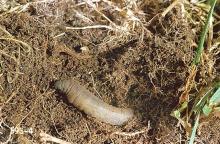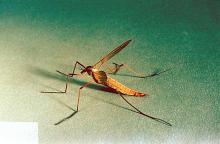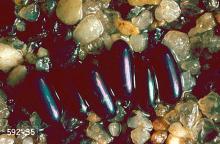Includes
Common cranefly (Tipula oleracea)
European cranefly (Tipula paludosa)
Pest description and crop damage This has been a pest west of the Cascades. They have been problems in heavy, wet soils of OR/WA coastal pastures and in the Willamette Valley. New seedings and weak stands are particularly at risk from large infestations of larvae. Heavy larval feeding has been associated with stand loss and poor crop vigor.
Adults are large, grayish brown, and resemble large mosquitoes. Adults do not feed other than possibly water and nectar. Eggs are black, narrow, rigid, and about 0.03 inch long and laid in the spring and fall where both tipula pests occur. The larvae, called leather-jackets, are large (1.5 inches at maturity) gray, cylindrical and without legs or very well-defined head. The larvae of these two pest species feed on many plant species, including grasses, clovers, mint crops, and root vegetables.
Biology and life history T. paludosa adults emerge in late August and September. T. oleracea may have two generations per year with flight activity in the spring and again in the fall, coincident with T. paludosa. Larvae damage crops from October through July.
Management-chemical control




